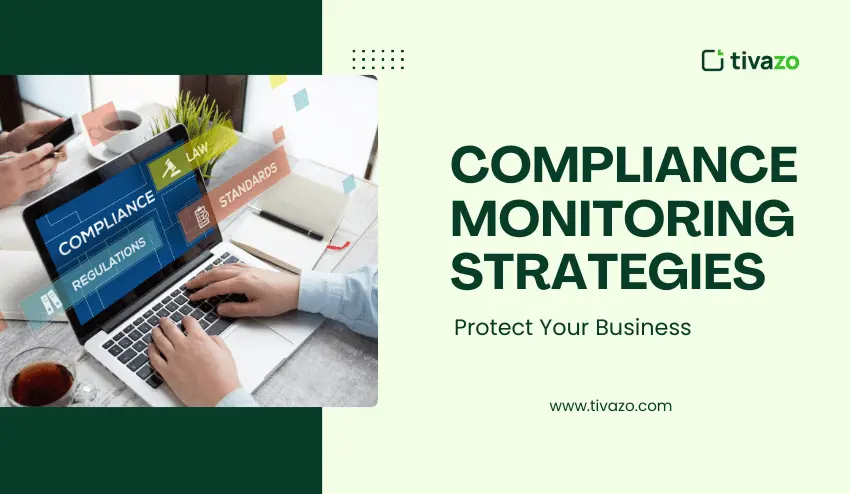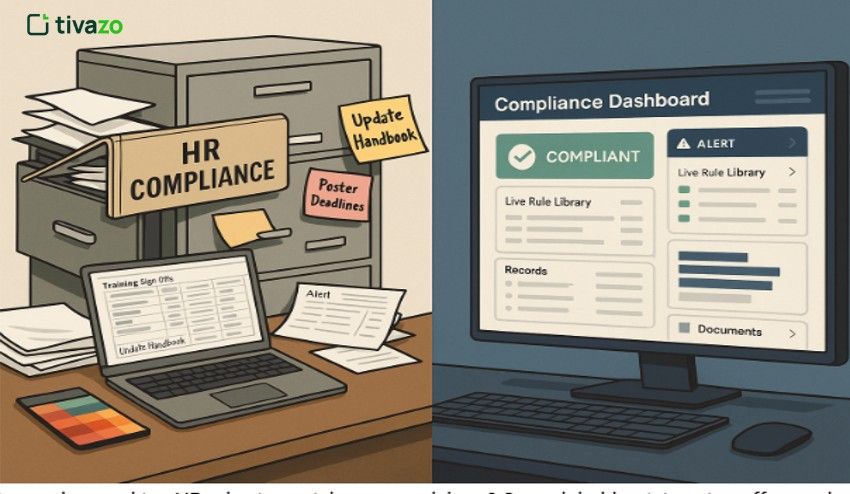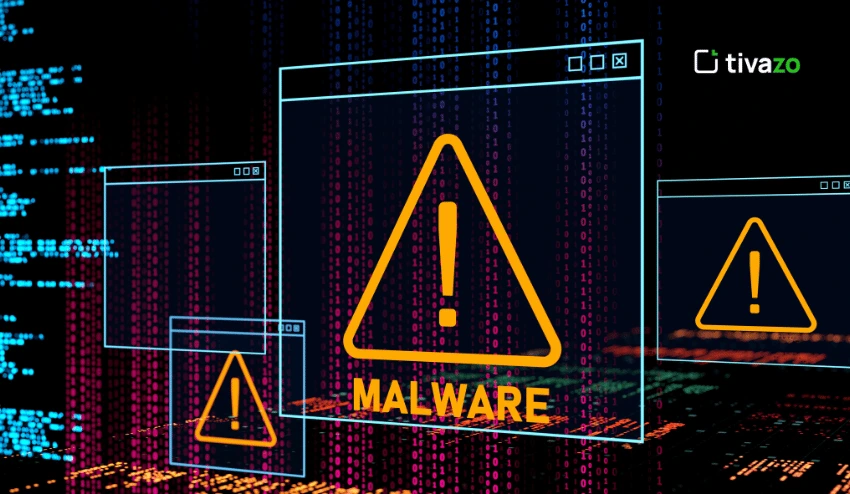In recent years, maintaining compliance has been more crucial than ever. The business world is fast-moving, and with regulations changing and the growing importance of data protection, businesses need to adapt. Non-compliance leads to significant penalties and irreversible reputational damage.
Fortunately, with the right tools and strategies, you can make sense of the complexity of compliance. This guide will provide you with actionable steps for developing a compliance monitoring plan that helps your business think ahead into 2025 and beyond.
Key Highlights:
- Compliance Monitoring definition.
- Importance of Compliance Monitoring
- Create a Plan
- Purpose of Monitoring
- Tools for Compliance Monitoring
- Advantages of it
- Challenges of it
What is Compliance Monitoring?
Compliance monitoring is the ongoing affirmative process of ensuring your business implements your policies and meets legal and regulatory frameworks. Compliance monitoring would consist of regular checks and audits to ensure an organization’s activities meet legal and regulatory standards required by industry standards.
For example, GDPR (General Data Protection Regulation) and HIPAA (Health Insurance Portability and Accountability Act) provide frameworks for choosing the appropriate guidelines for data protection and the healthcare privacy of clients and businesses. It is essential to ensure that your organization monitors and modifies its business practices to remain compliant with these changing regulations.
Why is Compliance Monitoring So Important?
Avoiding Fines and Legal Trouble
Non-compliance can lead to enormous fines and legal problems. Take Meta, for example, they paid $1.3 billion in 2023 due to a GDPR violation. That kind of non-compliance can easily add up.
- Fines can have a catastrophic impact on your business.
- Litigation alleys are costly and take time.
- Compliance, to eliminate the risk of costly non-compliance.
Building Trust with Your Customers
As more and more consumers become aware of their own data privacy issues, they want to make sure the data they’re providing to companies is secure. Following compliance items like the GDPR and CCPA (California Consumer Privacy Act) is a great way to avoid fines, but also to build stakeholder trust.
- Customers can rest easy knowing businesses are following data protection laws.
- Trust leads to increased customer loyalty and customer retention.
- Compliance metrics develop a competitive differentiator.
How to Create a Monitoring Plan
Steps to Create a Compliance Monitoring Plan:
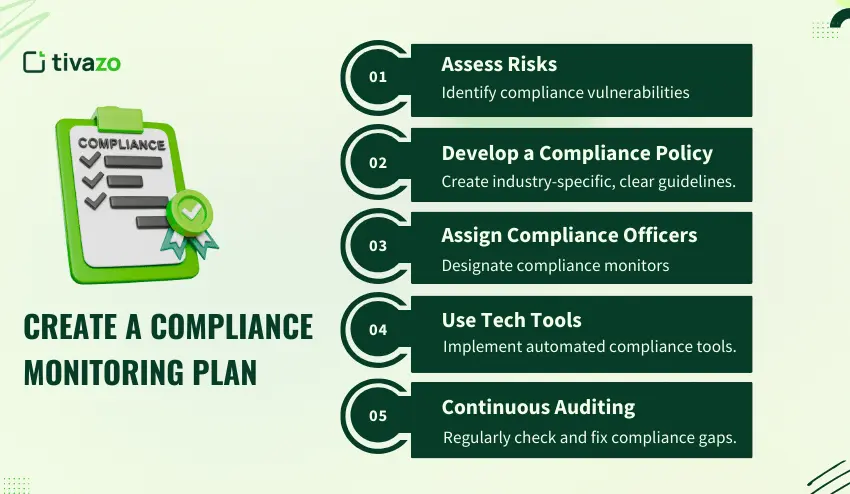
Step 1: Assess Risks
Evaluate where your business could be exposed to compliance risks. Examples are data breaches, violations of privacy, or mishandling sensitive information. Knowing your risks will help you focus on what areas to prioritize.
- Identify weaknesses in how data was stored and processed.
- Focus on high-risk areas such as financial transactions or patient information (in the case of healthcare).
- Review and identify risks regularly, especially as regulations change.
Step 2: Develop a Compliance Policy
Build a comprehensive, actionable policy to be industry and regulation-specific (HIPAA, GDPR). The expectation is an informed business that can communicate on different levels and minimize confusion regarding compliance.
- Policies should be tailored for each department Human Resources, IT, marketing, etc.
- Policies should also have procedures on how to handle a compliance violation.
- Policies should be communicated regularly to the staff category.
Step 3: Assign Compliance Officers
Designate where an individual or team will monitor compliance in a specific area. They will allow the organization to think about compliance and correct or change practices if needed.
- The Compliance Officer should be familiar with industry regulations.
- Ensure your Compliance Officers have all the resources necessary to conduct an audit.
- Give the Compliance Officers the authority and decision-making ability to institute compliance changes.
Step 4: Use Tech Tools for Monitoring
Consider using technology such as compliance software, which will make it easy for you to monitor compliance. Automated systems can help facilitate ongoing compliance monitoring and will alert you to any issues or violations, so you can resolve them before they become a serious concern.
- Invest in automated compliance management tools.
- Use dashboards and other similar technology to get a quick impression of your compliance status.
- These automated tools should be updated regularly to ensure compliance with changing regulations.
Step 5: Continuous Auditing
Regular internal audits serve to check whether your business is still in compliance. Continuous auditing is the best way to ensure compliance gaps are identified and addressed.
- Make use of audit results to improve policies and training.
- Auditing should be completed periodically to measure compliance.
- You should ensure that to make changes based on what the audits reveal.
What is the Purpose of Compliance Monitoring?
Compliance monitoring serves an important role for an organization, giving them assurance that regulatory requirements are being met, which decreases the likelihood of facing penalties and protects data and reputational risks. Here is why that is important:
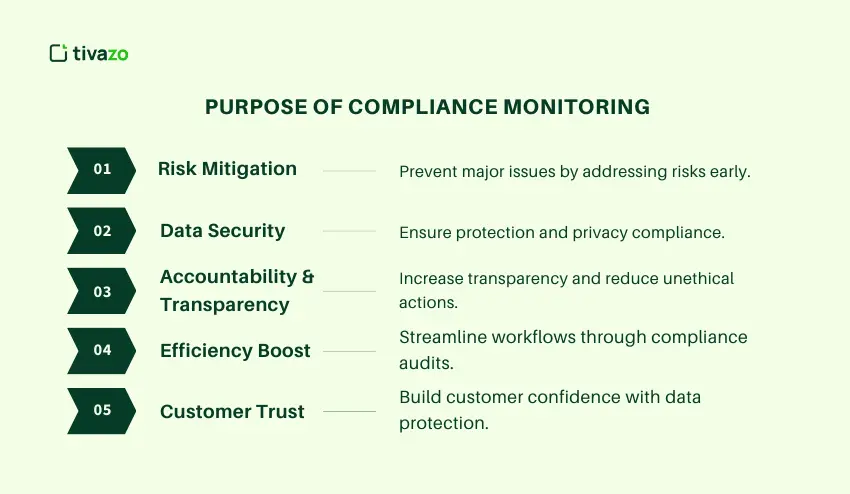
1. Risk Mitigation
Compliance monitoring allows organizations to identify risk areas and begin addressing them before they turn into big problems. For example, Meta was slapped with a $1.3 billion fine as a result of GDPR violations in 2023. By addressing compliance gaps proactively, organizations are limiting their risk of legal issues and damages from a hefty fine, like Meta faced.
2. Data Privacy and Security
Most organizations are seeing more cyber threats including both data breaches and ransomware attacks. Compliance monitoring will provide a review of the sensitive data and ensure adherence to existing laws, like GDPR and HIPAA, that stipulate protection measures for their sensitive data. Adhering to these laws and compliance frameworks reduces the risk of a breach, as well as protects your customers’ privacy.
3. Accountability and Transparency
Compliance monitoring provides your organization with accountability systems and increased system transparency through monitoring systems. Monitoring compliance will provide attention to employees from leadership. operational staff on their compliance responsibility, so the risk of unethical behaviors or actions that violate compliance obligations is lessened.
4. Efficiency Boost
There is also an element of compliance monitoring that contributes to efficiencies within organizations. Routine review or audits focused on compliance may also identify inefficiencies within workflows. Removing inefficiencies or redundancies goes hand-in-hand with compliance work, which in turn benefits the business at the bottom line.
5. Customer Trust
Being able to show compliance, especially in the area of data privacy, builds trust with their customers. Consumers are more likely to engage with organizations that demonstrate their effort to protect their data and participate in compliance measures in the industry.
Top Tools for Compliance Monitoring in 2025
Best Compliance Software
In 2025, businesses will be able to rely on an array of tools that help organizations become compliant. Some of these are:
- SIEM (Security Information and Event Management) tools for real-time monitoring
- VComply and LogicGate for end-to-end compliance management
- Splunk is an example of compliance solutions and allows for integrated risk management
These have changed the compliance process because they create real-time visibility, along with automation of monitoring and a secure data experience, so organizations can keep ahead of the requirements while catching issues before they happen.
Key Sectors and Their Compliance Needs
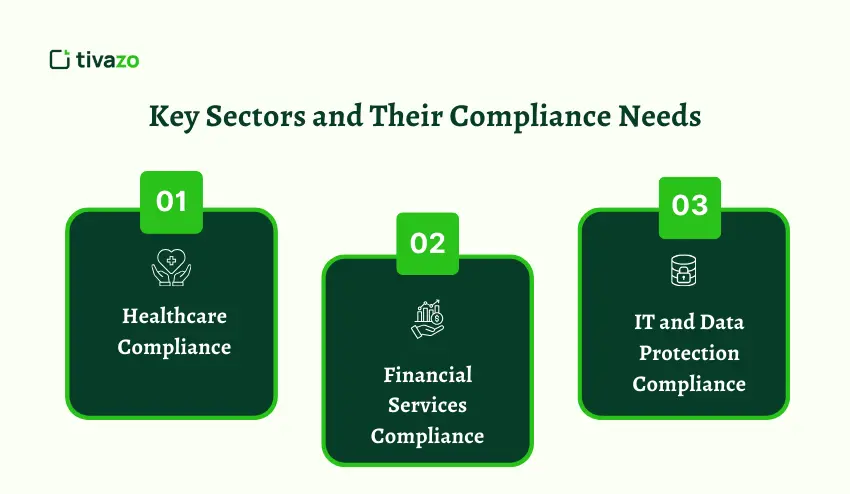
Healthcare Compliance
In healthcare, government regulations like HIPAA do their best to protect sensitive patient information. Automated compliance tools like Compliatric help to keep your healthcare organization compliant with government regulations.
Financial Services Compliance
For financial services, regulators enforce laws like SOX (Sarbanes-Oxley Act) and PCI-DSS (Payment Card Industry Data Security Standard). Complex legislation and regulations sometimes make it impossible to keep track of. Insurance organizations face similar challenges managing producer licensing and appointments across multiple states, with platforms like Producerflow automating these compliance workflows. Utilizing automated compliance tools can help organizations maintain compliance oversight, particularly those facing scrutiny.
IT and Data Protection Compliance
IT teams have to pay special attention to several broad categories of compliance, including GDPR and CIS Controls. Compliance through automation and monitoring provides additional oversight of activities or processes that would be burdensome and time-consuming.
How to Automate Monitoring
Why Automate Compliance Monitoring?
Compliance technologies and tools are designed to mitigate human error and shorten compliance monitoring time, allowing your compliance automation software to give you live events’ statuses and updates to remain informed about compliance status while you focus on the other valuable work on your plate.
The Role of AI and Machine Learning
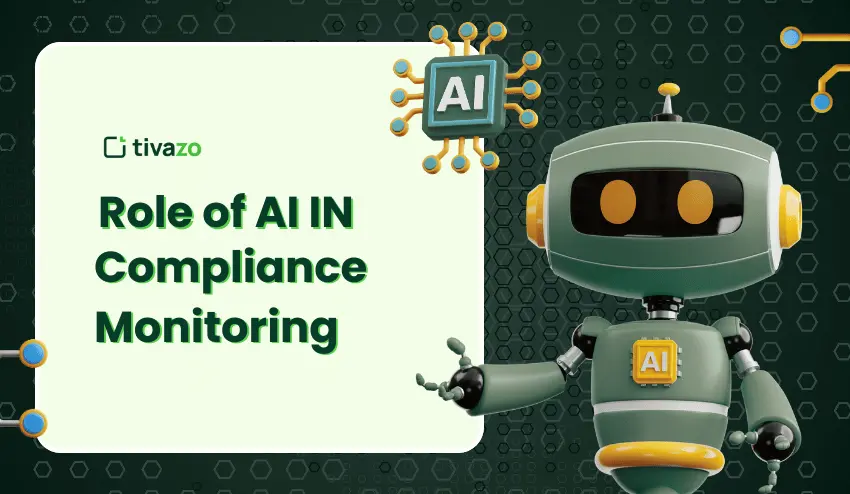
Artificial Intelligence and Machine Learning are revolutionizing compliance monitoring. They process massive amounts of data that help organizations find and identify risks in real-time. They can also predict potential compliance issues. AI and Machine Learning automate work, increase accuracy, and reduce human error to make compliance checks faster and more dependable.
Measuring Compliance Monitoring Effectiveness
Key Metrics for Success
The effectiveness of your compliance plan relies on a few metrics to analyze:
- Risk mitigation: How effective are you in addressing compliance concerns?
- Compliance violations: How often and at what speed are violations exhibiting?
These metrics will certainly help highlight variables to adjust the compliance processes when it is not meeting the intended objectives.
Advantages of Compliance Monitoring
Compliance monitoring can bring great benefits to organizations and allow organizations to stay competitive with measurable standards as the regulatory environment changes quickly:

1. Risk Reduction
Continuous monitoring will identify compliance risks that a company can respond to early enough to avoid costly and damaging fines and court proceedings. Continuous monitoring will ensure that you do not miss a regulatory update.
2. Data Security and Privacy Protection
Compliance monitoring will assist your organization to secure sensitive consumer data and comply with privacy standards, like GDPR and HIPAA, that, if violated, could lead to major data breaches with damaging financial impacts for consumers and organizations.
3. Building Trust with Stakeholders
Organizations that are compliant with compliance laws and regulations build trust with customers, institutions, and other organizational partners. Compliance monitoring signifies that you value data protection, ethical practice, and responsiveness in how you employ processes.
4. Operational Efficiency
There could be substantial operational efficiencies as organizations take compliance monitoring processes more seriously and use technology that could serve to enhance the timely use of resources, as well as automation.
5. Enhanced Accountability
Having transparent compliance policies, along with continuous compliance monitoring, increases accountability and employee awareness as to their role in an organization, more specifically, protecting data and meeting the compliance regulation standards set out to reach in the planning to meet compliance needs.
6. Staying Ahead of Regulatory Changes
In a rather dynamic regulatory environment, compliance monitoring can help businesses keep pace with new regulations, enabling them to avoid penalties associated with the use of previous or outdated practices.
The Challenges of Compliance Monitoring
Although compliance monitoring is critical, it is not without its challenges. Here are a few of the challenges businesses face and solutions:
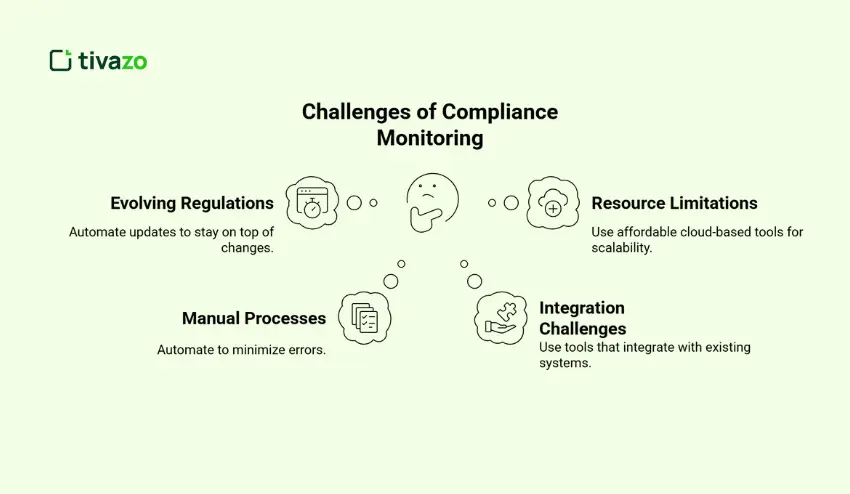
1. Evolving Regulations
Regulatory changes happen all the time, and keeping pace with those regulatory changes can be overwhelming. For example, following the implementation of the ePrivacy Regulation, GDPR referenced ePrivacy with updated regulations, and businesses had to act.
Solution: Create systems that provide real-time updates on regulations and automate these processes where possible. Compliance management software provides systems that can help monitor and respond to regulatory changes.
2. Resource Limitations
Small and medium-sized businesses may find it difficult to allocate sufficient financial, technical, and human resources for compliance monitoring. And although many compliance solutions may seem expensive, the risk associated with non-compliance fines may cost significantly more.
Solution: Use low-cost cloud-based compliance tools that can grow as you develop. A lot of these solutions offer monthly subscriptions, allowing you to spread the upfront costs.
3. Manual Processes and Human Error
The issues posed by manual work processes are the possibility of making an error to miss a deadline, or worse, missing a compliance gap. Even small mistakes can equate to greatly negative consequences.
Solution: Wherever practical, automate compliance checks because several compliance tools will allow you to be monitored and compliant 24/7, whenever you use AI and automated compliance software.
4. Integration Across Systems
Integrating compliance monitoring tools into existing systems, such as HR Services, Finance, IT, etc., can be challenging and complicated, especially if your organization is very large.
Solution: Choose an integrated compliance management system that will allow you to integrate as required into existing tools you may be using already. There are many platforms available; Splunk and VComply are a few that allow for integrations.
Conclusion: Compliance Monitoring as a Key to Business Success
Proactive compliance monitoring is essential for avoiding penalties and protecting your reputation. By staying ahead of regulatory changes, you safeguard both your business and your customers.
Compliance isn’t a one-time effort; it requires a long-term strategy. Continuously update your policies, invest in monitoring tools, and provide regular training to stay prepared for new challenges. This approach ensures long-term success in an ever-changing regulatory environment.
